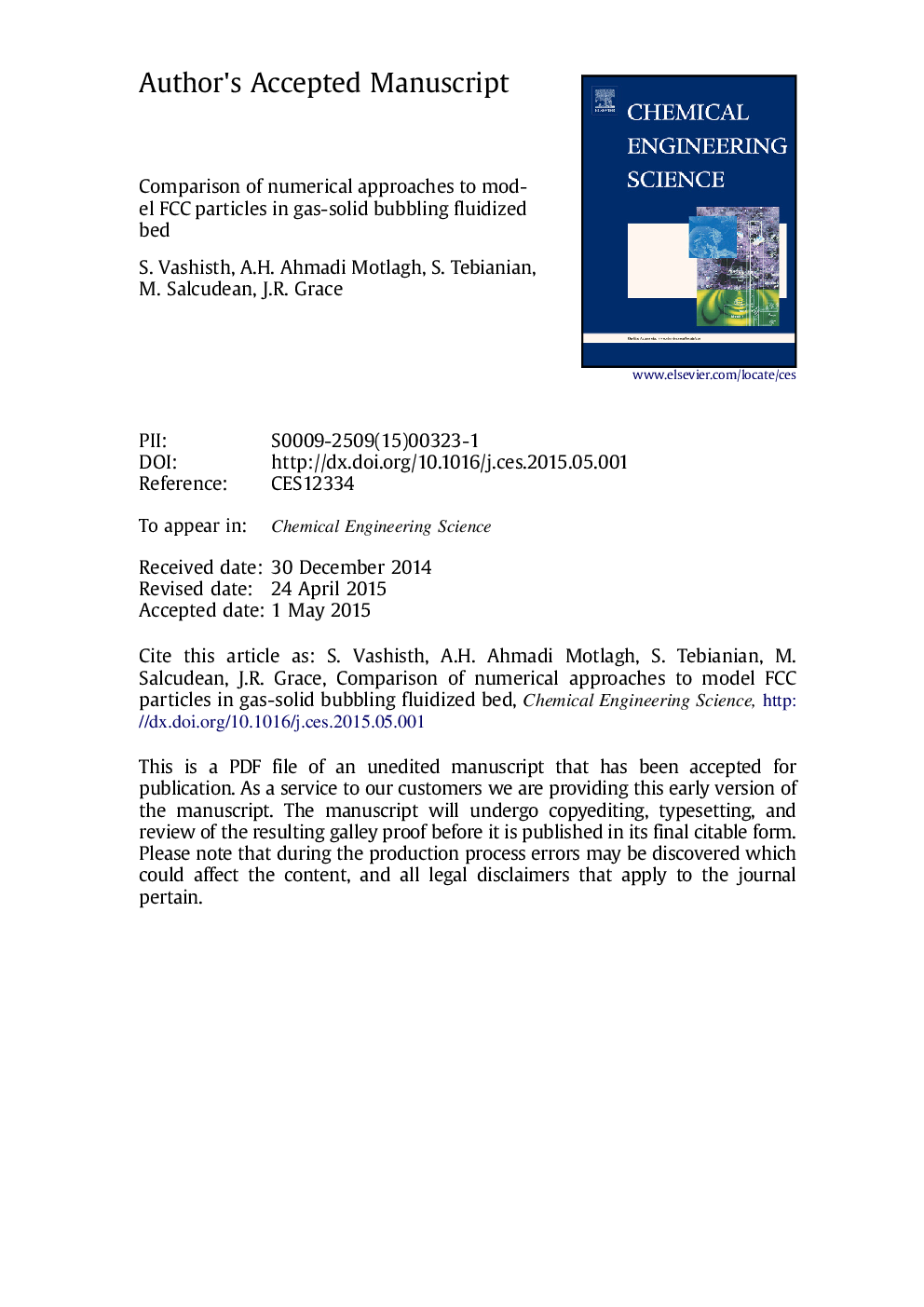| Article ID | Journal | Published Year | Pages | File Type |
|---|---|---|---|---|
| 6589697 | Chemical Engineering Science | 2015 | 52 Pages |
Abstract
A comparative study has been carried out to determine the ability of computational fluid dynamics (CFD) and computational particle fluid dynamics (CPFD) codes to predict the hydrodynamics of FCC particles in a bubbling fluidized bed. Simulations were conducted in both 2-dimensional (2-D) and 3-dimensional (3-D) CFD configuration and in a 3-D CPFD model. The new structure based force-balance (FB) model of Ahmadi Motlagh et al. (2014. Chem. Eng. Sci. 120, 22-36.) was incorporated in CFD to simulate the behavior of FCC in the bubbling fluidization regime. This model modifies the conventional drag correlation by considering the effect of interparticle forces on the formation of agglomerates inside the bed, updating the drag calculations by replacing the particle diameter in the Wen and Yu correlation by an agglomerate diameter. The effects of superficial gas velocity, particle diameter, particle-particle restitution coefficient and specularity coefficient on voidage are examined. The sensitivity of different gas-solid drag closures in CFD are tested and compared. Experimental time-average axial and radial voidage profiles were simulated with varying degrees of agreement with experimental data obtained using different advanced experimental techniques in the “Traveling fluidized bed” (Dubrawski et al., 2013. Powder Technol. 235, 203-220; Tebianian et al., 2014. Extending the comparison of voidage measurement and modeling techniques in fluidized beds. In: Proc. 11th International Conference on Fluidized Bed Technology, (Eds.), J. Li, X.J. Bao and W. Wang. Chemical Industry Press, Beijing 137-142.). Both the FB and CPFD models were successful in resolving key issues in 3-D, whereas 2-D models tended to seriously underpredict particle volume fraction, especially near the wall.
Keywords
Related Topics
Physical Sciences and Engineering
Chemical Engineering
Chemical Engineering (General)
Authors
S. Vashisth, A.H. Ahmadi Motlagh, S. Tebianian, M. Salcudean, J.R. Grace,
